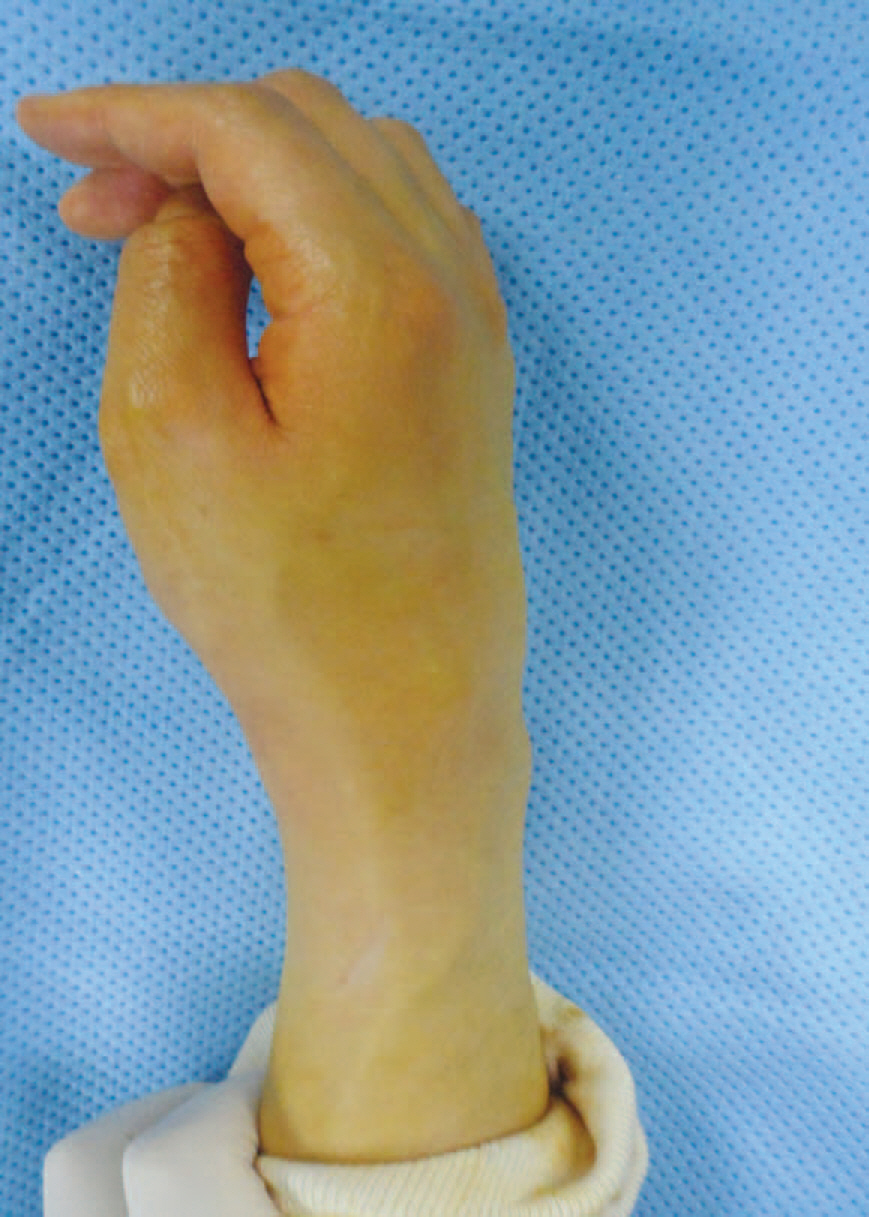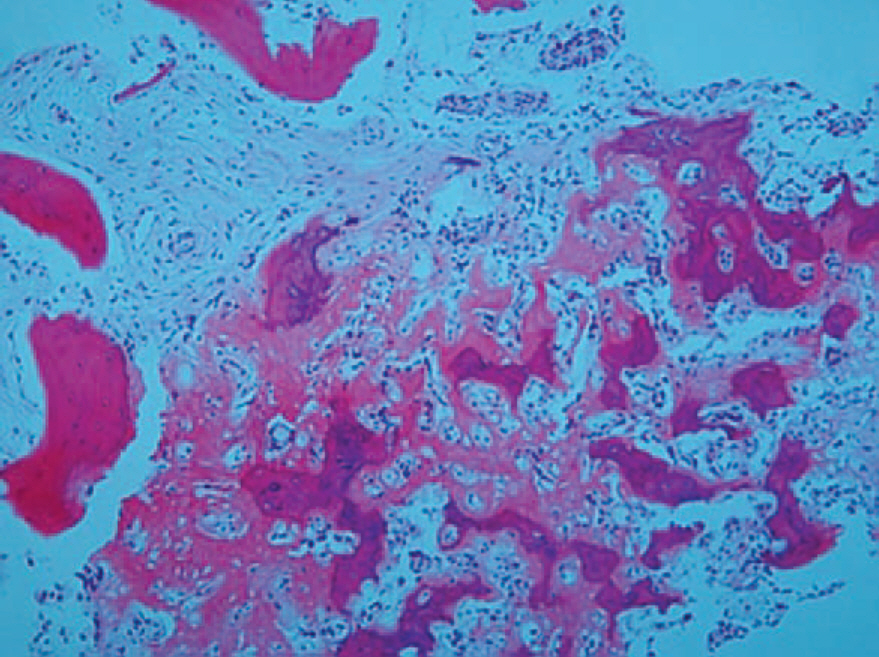J Korean Soc Surg Hand.
2013 Sep;18(3):138-142. 10.12790/jkssh.2013.18.3.138.
Osteoid Osteoma of the Capitate with Extensor Tenosynovitis
- Affiliations
-
- 1Department of Orthopedic Surgery, Eulji General Hospital, Eulji University College of Medicine, Seoul, Korea. sby2409@eulji.ac.kr
- 2Department of Radiology, Eulji General Hospital, Eulji University College of Medicine, Seoul, Korea.
- KMID: 2194144
- DOI: http://doi.org/10.12790/jkssh.2013.18.3.138
Abstract
- An osteoid osteoma is a benign bone tumor. It is most commonly found in the femur and tibia but only 5% to 15% occurs in hand. Osteoid osteoma of carpal bone has vague nature of symptoms including spontaneous dull aching causing delayed diagnosis and the late treatment. We had a patient with an osteoid osteoma of the capitate bone presenting with tenosynovitis. We present clinical and radiological findings including magnetic resonance imaging, surgical result, and a review of the current literature.
Keyword
MeSH Terms
Figure
Reference
-
1. Marcuzzi A, Acciaro AL, Landi A. Osteoid osteoma of the hand and wrist. J Hand Surg Br. 2002; 27:440–3.
Article2. Bednar MS, Weiland AJ, Light TR. Osteoid osteoma of the upper extremity. Hand Clin. 1995; 11:211–21.
Article3. Ghiam GF, Bora FW Jr. Osteoid osteoma of the carpal bones. J Hand Surg Am. 1978; 3:280–3.
Article4. Murray PM, Berger RA, Inwards CY. Primary neoplasms of the carpal bones. J Hand Surg Am. 1999; 24:1008–13.
Article5. Edeiken J, DePalma AF, Hodes PJ. Osteoid osteoma. (Roentgenographic emphasis). Clin Orthop Relat Res. 1966; 49:201–6.
Article6. Spouge AR, Thain LM. Osteoid osteoma: MR imaging revisited. Clin Imaging. 2000; 24:19–27.
Article7. Campanacci M, Ruggieri P, Gasbarrini A, Ferraro A, Campanacci L. Osteoid osteoma. Direct visual identification and intralesional excision of the nidus with minimal removal of bone. J Bone Joint Surg Br. 1999; 81:814–20.8. Rosenthal DI, Hornicek FJ, Wolfe MW, Jennings LC, Gebhardt MC, Mankin HJ. Percutaneous radiofrequency coagulation of osteoid osteoma compared with operative treatment. J Bone Joint Surg Am. 1998; 80:815–21.
Article9. Harrod CC, Boykin RE, Jupiter JB. Pain and swelling after radiofrequency treatment of proximal phalanx osteoid osteoma: case report. J Hand Surg Am. 2010; 35:990–4.
Article10. Ambrosia JM, Wold LE, Amadio PC. Osteoid osteoma of the hand and wrist. J Hand Surg Am. 1987; 12:794–800.
Article






